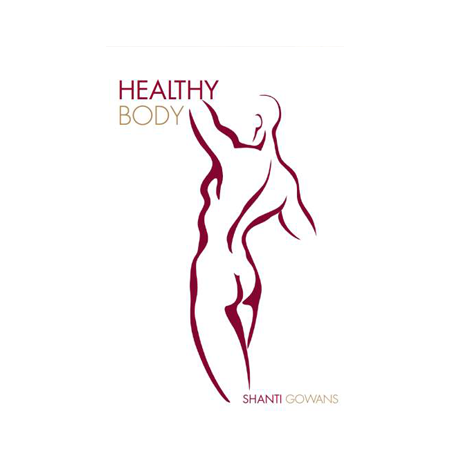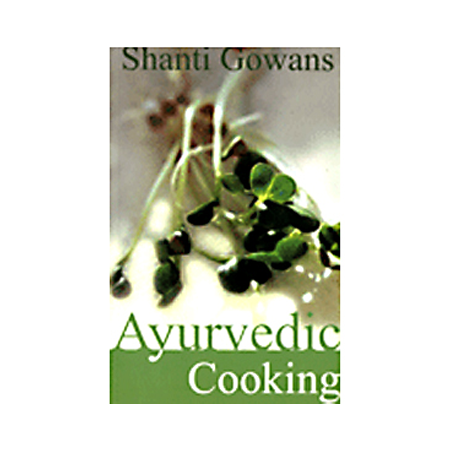Ayurveda for Healthy Body, Anatomy and Physiology by Shanti Gowans
Shanti Gowans’ anatomy and physiology book, HEALTHY BODY, is a book about the structures and function of the human body and the effects of Ayurveda and Yoga on it. It is the basic textbook for Yoga for Life 600 hours.
It is also available as an online course, with certification.
Additional Information
You can live in your body without really knowing it. You can take it for granted until it becomes sick or injured. On the other hand, if you radically accept your body and take care of it, you open up the lines of communication between your body, heart and mind.
We can look at the human body in different ways. Modern medicine has taken the approach of understanding the body by studying its individual parts (molecules, cells, tissues, organs, etc.) in a highly specialised manner. This effort has provided humankind with enormous benefits such as antibiotics, advanced surgical techniques and molecular medicine.
Another approach is to view the body as a whole, and study its holistic interaction with the environment, internally and externally. This is the approach of wisdom practices and ancient systems of medicine such as Yoga, Siddha and Ayurveda, which have benefited billions of people for thousands of years. Here you are encouraged to choose to experience your body as your home, and to liberate yourself from the illusion of a separateness between your heart, mind and body.
Shanti Gowans’ anatomy and physiology book, HEALTHY BODY, is a book about the structures and function of the human body and the effects of Ayurved and Yoga on it. It is the basic textbook for Yoga for Life 600 hours. Listed below are its contents.
It is also available as an online course, with certification.
INTRODUCTION
PART I A GLIMPSE INTO THE HUMAN BODY
1.1 In the beginning
1.2 Organising the Body
1.2.1 The Signs of Life
1.2.2 Your Chemistry
1.2.3 Building Blocks
1.2.4 Inside a Cell
1.2.5 Making New Cells
1.2.6 Tissue
1.2.7 Organs
1.2.8 Systems
1.3 The Body Systems
1.3.1 The Circulatory System
1.3.2 The Breathing or Respiratory System
1.3.3 The Digestive System
1.3.4 The Urinary System
1.3.5 The Nervous System
1.3.6 The Endocrine System
1.3.7 The Reproductive System
1.3.8 The Muscular System
1.3.9 The Skeletal System
1.3.10 The Immune System
1.3.11 The Skin, Hair and Nails
1.4 Good Health
1.4.1 Health
1.4.2 The Pillars of Health
1.4.3 Your Healthy Aims
1.4.4 The Vedic Understanding of Health
1.4.5 Guiding Principles
1.4.6 Healthy Diet and Lifestyle
1.5 The Universe in an Atom
1.5.1 Key Paired Expressions
1.5.2 Cycles and Circles
1.5.3 Matter and Antimatter
1.5.4 Energy and Force
1.5.5 Unbroken Wholeness
1.5.6 Five-Phase Evolutionary Stages of Transformation
1.5.7 Constitutional Typing
1.5.8 In Medicine, Healing and Disease
PART 2 THE CONTAINER
2.1 Bones
2.1.1 Your Bones
2.1.2 Body Cavities
2.1.3 Bone
Bone and Cartilage
What is in a Bone?
Bone Food
Compact Bone
Spongy Bone
Bone Breakages
Degeneration of Bone
Marrow
2.1.4 List of Bones
Foot
Ankle
Lower Legs
Knee
Thigh
Hip
Backbone
Chest, Ribs and Sternum
Shoulder
Arm
Neck, Cervical Vertebrae
Head, Cranium
2.2 Joints
2.2.1 What are joints?
2.2.2 Types of Joints
2.2.3 Joint Movement
Joint Capsule
Ligaments
2.2.4 Joint Pain
2.3 Muscles
2.3.1 Different Kinds of Muscles
Muscles – Function
2.3.2 Tendons
2.3.3 Muscle Power
Muscle Action
Types of Contraction
Toning Muscles. Strength. Stamina. Flexibility. Out of shape
Important Muscles. Spinal. Respiratory
2.3.4 Muscle food
2.3.5 Psychosomatic Concepts
2.4 Healthy Skin, Nails and Hair
2.4.1 Skin
2.4.2 Sweat
2.4.3 Hair
2.4.4 Nails
2.5 Movement
2.5.1 Posture
2.5.2 Posture and Movement Awareness
2.5.3 The Thoracic and Cervical Spine
Social Straight Jacket
2.5.4 The Pelvis
Pelvic Vocabulary
The prime mover, the pelvis…is it responsive to your intention?
2.5.5 Pain Free Posture
2.5.6 DIY Posture Clinic
2.5.7 Gait: Walking, the Way to Functional Improvement.
PART 3 THE CONTROL CENTRE
3 The Broad Picture
3.1 Your Brain
Important Features of Brain Function
Ceaseless Activity
Integrative Functioning: Consciousness. Memory. Speech Function. Emotion
Specific Functioning of the Different Areas
3.1.1 Sense Signals
3.1.2 Left and Right Brain
3.1.3 Learning
3.1.4 Memory
3.1.5 Boost Brain Functioning
3.1.6 Wisdom Energy
3.2 Your Network of Nerves
3.2.1 The Flexible Tunnel
3.2.2 Neural Network
3.2.3 Quicker than Thinking
Messages
Pins and Needles
Pain-killers
3.2.4 Sleep
3.2.5 The Autonomic Nervous System
3.2.6 Sympathetic Nervous System
3.2.7 Parasympathetic Nervous System
3.2.8 Homeostatis
3.2.10 Biofeedback
3.3 Hormones – The Activators
3.3.1 Hormone-making glands
3.3.2 Thyroid
3.3.3 Thymus
3.3.4 Adrenals
3.3.5 Pancreas
3.3.6 Sexual and Reproductive Glands
3.3.7 Pineal
3.3.7 Pituitary
3.4 The Liberating Force
3.4.1 Prana
3.4.2 Channels
3.4.3 Chakras
3.4.4 Kundalini, Awakening the Cosmic Serpent
3.5 Fighting Disease: Your Immunity
3.5.1 Germs, Bacteria and Viruses
3.5.2 Body Defences
3.5.3 Fighting Germs
3.5.4 When Defences are Down
3.5.5 Allergies
3.5.6 The Mind-Body Connection
3.6 Organs of Knowing: Celebrating the Five Senses
3.6.1 Looking Around
How you See
How your Eye Works Seeing
3.6.2 Listening In
Outer Ear
Middle Ear
Inner Ear
Hearing Silence
Balance
3.6.3 Taste Sensations
Taste Detector
Taste Buds
Different Tastes
3.6.4 A Good Sniff
Sensitive nose
Smell Receptors
3.6.5 Touchy Feely
Under your skin
Sensitive parts
Things we can feel
3.6.6 Communication
Sounds
Shaping Sounds
Silent Speech
Letters and Words
Body Language
Communicating Effectively
PART 4 CIRCULATION
4.1 Cardiovascular System
Your Heart
4.2 Diseases of the Heart
4.2.1 Atherosclerosis
4.2.2 Coronary Heart Diseases (CHD)
4.2.3 Angina
4.2.4 Heart Attack
4.2.5 Ventricular Fibrillation
4.2.6 Heart Failure
4.2.7 Preventing Coronary Atherosclerosis, and hence Heart Attacks
4.3 Blood Vessels. Arteries. Veins. Capillaries
Lymphatic System
Circulation and Blood Pressure
High Blood Pressure
Peripheral Vascular Disease
4.4 Blood
Bone Marrow and Stem Cells
Composition of Blood
Exchanging Blood
4.5 Cholesterol
LDL and HDL cholesterol
PART 5 RESPIRATION
5.1 Breathe Deeply
The Organs of the Respiratory System
The Mechanics of Breathing
The Process of Breathing
Lung Volumes
Control of Respiration
Cardiac Rhythms and Respiration
5.2 Posture and Breathing
5.2.1 Breathing involves over 104 Joints and 60 Muscles
5.2.2 Breathing as a Social Function
5.2.3 Good Breathing is Good Posture and visa versa
5.2.4 Posture Patterns and Breathing
5.3 Autonomic Nervous System and Breathing
5.3.1 Pain and your Breathing
5.4 Breath and your Mind
5.5 Breath and Longevity
5.5.1 Smoking and Your Health
5.6 Respiratory Conditions
5.6.1 Asthma
5.6.2 Sore Throats
5.6.3 The Common Cold
5.6.4 Chronic Bronchitis
5.6.5 Chronic Sinus Infection
5.6.6 Cough
5.6.7 The Flu
5.6.8 Herbal Remedies
5.6.9 From the Ayurvedic Herbal Medicine Cabinet
PART 6 YOUR DIGESTION
6.1 Digestion Preliminaries
The Process of Digestion
6.1.1 Physical or Mechanical Digestion
6.1.2 Chemical Digestion
6.1.3 The Process of Absorption
6.1.4 The Process of Metabolism
Total Metabolic Rate and Weight Control
6.1.5 Digesting a meal
Heartburn and Acid Refux
6.1.6 The Time Line
6.2 Your Digestive System
6.2.1 Your Mouth
Ready, Steady, Swallow
6.2.2 From Mouth to Stomach
6.2.3 The Production Line
Stomach
Intestines
6.2.4 The Work of Digestion Continues
The Food Processors
6.2.5 Excretory Systems
6.3 Constipation
6.3.1 Good and Bad Bacteria
6.3.2 Eliminate Toxic Waste
6.4 Eating for Health
6.4.1 Healthy Food
6.4.2 Protein
6.4.3 Carbohydrates
Simple and Complex Carbohydrates
Whole Grains
6.4.4 Water
Too much Water?
Dehydration
6.4.5 Fats
6.4.6 Vitamins and Minerals
6.4.7 Salt and Pepper
6.5 Addiction to Food
6.5.1 Reading a Label
6.5.2 Changing the way you eat
6.6 The Metabolic Understanding of Ayurveda
6.7 Food is Sacred
6.7.1 Vegetarianism
PART 7 WATERWORKS
7.1 Urine
7.1.1 What is Urine?
7.1.2 Physiology in the Formation of Urine
7.1.3 Function of Urine
7.2 Urinary System
7.2.1 Inside a Kidney
7.2.2 Water Disposal
7.2.3 The Stretchy Bladder
7.3 Urinary Problems
7.3.1 Accumulation
7.3.2 Diminished Urine
7.3.3 Kidney Stones
7.3.4 The Importance of Water
PART 8 HOW LIFE BEGINS AND PROGRESSES
8.1 Main Characteristics of Life
Change in Location and Size
Maintenance of Nutritional Status
Reproduction
Sexual Behaviour
8.1.1 Female Parts
8.1.2 Male Parts
8.1.3 DNA
8.1.4 The Sperm Meets the Egg
8.1.5 Different Genes
8.2 In the Womb
8.2.1 The Cells Divide
8.2.2 An Embryo Forms
8.2.3 The Body Shapes Itself
8.2.4 The Foetus Forms
8.2.5 Early Life
8.2.6 Delivery
8.3 Growing Up
8.3.1 Growing Old
8.3.2 Yoga Health and Longevity
APPENDIX
1. Medicine Chronology
2. Science Chronology
3. Questions





